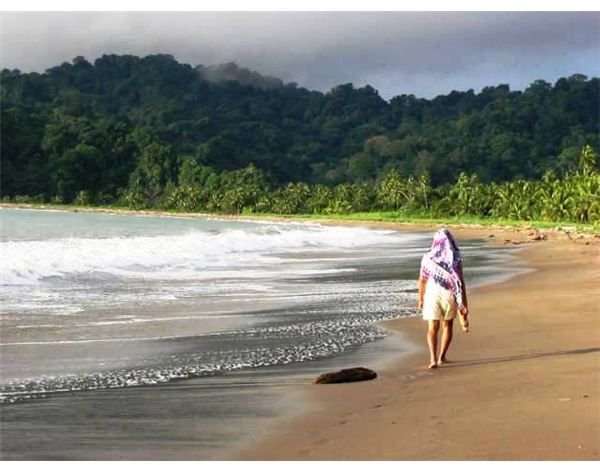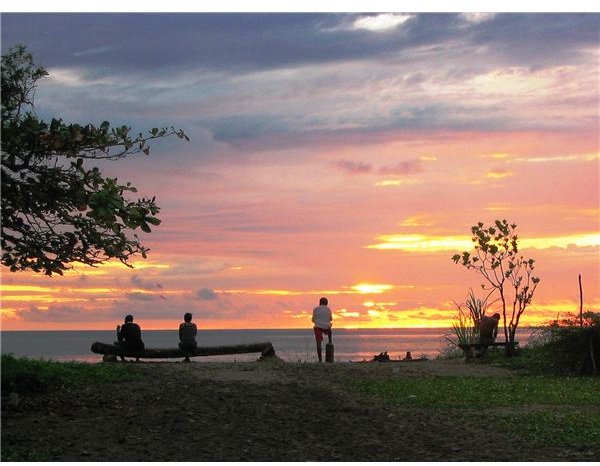How to Take Great Beach Photos - Digital Photography Tips and Techniques - Part 2
Back to the Beach
Part 1 - How to Take Great Photographs at the Beach
Sunsets or Sunrises If you arrive very early or stay very late, depending on which ocean and coast, you could have the option of taking sunrise or sunset digital images with trees, plants, animals or people framed in the scene. With sunsets and sunrises, you’ll need to meter off of the bright portion of the scene for your one set of images, then meter off of darker areas of the scene to shoot more bracketed photos. From this bracketed set of images you’re sure to capture some you’ll love. To capture this silhouetted group of people sunset-watching I backed up more than a dozen yards and metered off of the brightest part of the scene. [See Image 1]
Silhouettes
In another digital photography article I discussed taking silhouette images using a digital camera. The beach can be an excellent location from which to do so because of its typically strong contrasts between light and shadow. People or objects framed against the backdrop of the setting sun can produce stunning images. Often, the beach is empty or near-deserted, so you’ll have more options for composing this type of image. Be sure to expose for the brightest areas of the scene to ensure a deep-contrast silhouette. Partial silhouettes, in which sparse details of texture and color are visible in the foreground, are good image combinations too.
Close-up and Macro Images Close-ups or macro images are another natural at the beach. Many of the indigenous critters will be small and offer good opportunities to use the macro or digital zoom settings on your digital camera. Also consider textures, abstracts, colors and patterns in your quest for an expansive variety of beach images. The contrasts of early morning or late afternoon sun can help to provide unique lighting for macro images. If you don’t have a macro lens you can use a zoom feature or the manual setting on many digital camera models to get as close as two optical inches or so to your subject. I had to kneel in the ankle-deep Costa Rican Caribbean surf for several minutes waiting for it to come out, but when curiosity got the better of this shy sand crab and it peeked out at me, I zoomed in to capture several frames and some video clips before it scurried back under a fallen log. [See Image 2]
Beach Activities
Sure, you can swim and sunbathe, but there are tons of other activities people enjoy at the beach. Try catching and photographing people who are shell-collecting, flying kites, playing volleyball, fishing, walking or otherwise making use of the beach. Use the rule of thirds to compose your image, set the flash to fill-in shadowed areas and focus carefully. Pay attention to the colors in your shots and fill the frame with your image. Use manual settings to increase the shutter speed cutting down on overexposures and unintentionally blurred action images. The lady walking on a nearly-deserted beach late in the afternoon made a good compositional contrast in mood, lighting and color. [See Image 3]
Taking Great Digital Photographs at the Beach
The options for taking great digital photographs at the beach are vast. Try using any of these tips and techniques during your next outing to the ocean and also read A Guide to Nature Photography for additional inspiration. Whether to a shoulder-to-shoulder packed beach or a lonely stretch of coastal water, you’ll find a multitude of ways to add some attention-getting digital images to your album or portfolio.
Images


